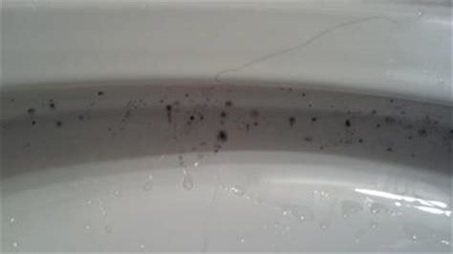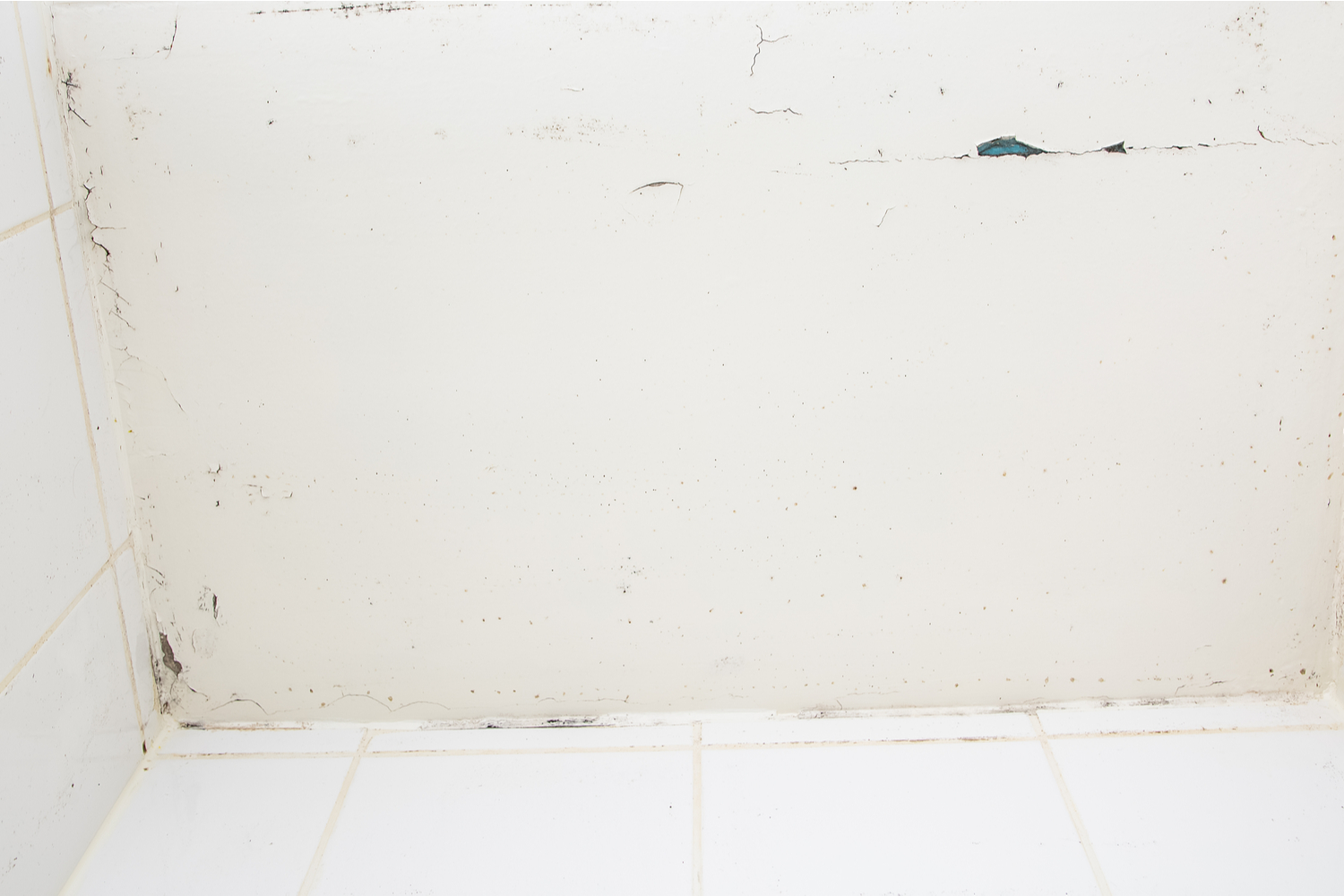You open the lid on your toilet bowl only to discover a black ring of mold. You ask why is there mold growing under the rim of my toilet? Where did it come from and just how safe is it to use the toilet? Besides just being an ugly sight, mold in the toilet bowl could be a health hazard.

Water Mold Fire Restoration, 800-905-0277, wants you understand that, believe it or not, mold growing under the rim of a toilet is a common household problem, even for the tidiest of individuals. And you don’t have to have a water damage in your home for this to occur. That’s because there is always water in your toilet bowl and it is easy for mold to develop. Also the toilet lid is usually closed keeping the bowl in the dark.
Mold likes water, dark spaces, and organic materials. You and your family provide the organic material, if you know what we mean. An interesting aside if you or a member of your family has diabetes.
A diabetic’s body has a problem processing glucose. Thus their urine will contain more sugar that a completely healthy person, even if their diabetes is under control. Glucose enriched fluid is an excellent food for mold inside a toilet.
In addition, toilets that are not used regularly, or flushed as often as others in your home, are more likely to develop a mold problem. Even if they are not used every day, you should flush them upon occasion.
What Makes Mold Dangerous?
There are numerous types of mold, estimates are that there are more than 100,000 in the United States alone. As molds expand their colonies, they release spores and many types produce chemicals called mycotoxins that can cause health problems for humans.
According to the Centers for Disease Control and Prevention, mold can affect people’s health in many different ways:
- Stuffy nose
- Red or itchy eyes
- Skin rashes
- Asthma
- Shortness of breath
- Headaches
There is no blood tests currently available to determine if someone has been affected by exposure to mold. Allergy testing can be done, but no test will tell you where or when an exposure took place. Mold sensitivities affect some individuals more than others. The people that have a higher risk to mold exposure are people with immune systems that are weakened, young children, and the elderly.
Removing Toilet Mold
The good news about discovering mold under the rim of your toilet is that it can be easily cleaned and the fact that your toilet is made of porcelain, a non-porous material. Being non-porous, the mold can only exist on the surface, it can’t dig its roots into the toilet bowl itself. Before starting any mold removal its important to take adequate safety precautions. Wear rubber gloves and maybe a N-95 facemask.
First flush the toilet so that you start your cleaning with fresh, clean water. Use a mild bathroom cleaner and a toilet brush and/or rag to scrub the mold from under the rim. (Always use something soft when scrubbing your toilet. The porcelain finish can be easily scratched if you use something abrasive. This would also include the product you use to clean with. No scouring powder!) Flush the toilet repeat the scrubbing until you see no more mold. Pour one cup of chlorine bleach into the bowl and let to sit for 20 minutes or so. Scrub the toilet once more that flush it one more time.
A word of warning: never pour chlorine bleach in the toilet tank in an attempt to clean inside it. Bleach is corrosive and could cause damage to the plumbing parts located inside the tank. If you need to treat the toilet tank, use white vinegar instead of bleach.
Another method to remove mold from under your toilet bowl rim would be to use steam. If you have a handheld steamer it can be a great tool. First shut off the water supply to the toilet. Flush the toilet to remove as much water as you can. Use your steam cleaner to steam the bowl and underneath the rim with as high a pressure as your machine allows. Flush the toilet when you are done and repeat the steaming if necessary. When you are finished, wipe the toilet surfaces dry with a soft cloth.
Preventing Mold Around Your Toilet Rim
The best prevention technique is to do regular toilet cleanings. If you do this every 7-10 days you will greatly reduce the chances of mold developing in your toilets. You should also take steps to lower the humidity in your bathrooms. You can do this by making sure there are no small leaks, using an exhaust fan when in the bathroom, or open a window when the room is in use.
Another thing that you can do is every once in a while is to give your bathroom the “Motel 6” treatment by leaving the bathroom light on overnight and the toilet lid up. Mold doesn’t like bright light or sunlight. Also never attempt to “save” water by not flushing your toilets after using them. The “If it’s yellow” rhyme is cute, but you don’t want to give mold any chance to take up residence.
If the mold reappears in your toilet within a day or two of your cleaning, it could be an indication of a larger mold issue in your home. If this is the case, it would be wise to seek professional help.
Professional Help Is Available
If you have concerns about a larger mold problem in your home, know that Water Mold Fire Restoration, 800-905-0277, stands ready to help. We are experts when it comes to identifying and remediating mold problems. We always answer our phones 24 hours a day, meaning you will talk to a live person, not an answering machine. Know that we consider there to be no emergency too large or too small and our advice is always free. If you prefer, you can also contact us by email at help@watermoldfire.net.








